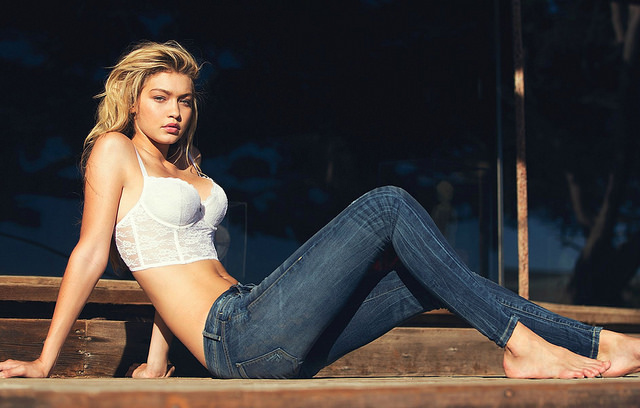
The Extinction of the Supermodel
by Mia Neafcy | February 28, 2017
“Sashay away!”, an unabashed voice exclaims from our TV screens. For those not au fait with RuPaul’s Drag Race, this pithy one-liner will invariably spell the end for an aspiring drag queen, sending them packing, with neither their lifetime supply of cosmetics nor their $100,000. For us fans, it will mark the end of another episode; yet another shameless RuPaul binge. But, more importantly, rather than just a leitmotif of our eponymous queen, the ‘sashay’ of which RuPaul speaks is a testament to the enduring importance of the art of the runway ‘walk’, as much today as it was during the heyday of runway fashion throughout the ’80s and ’90s.
The ‘sashay’ is a style of walking most notably championed by the supermodels of the ’80s such as Iman and Cindy Crawford, a ‘strut or flounce in a showy manner’. Such was the distinction of this movement that it was not long before models were displaying a grace and elegance that was more redolent of dance than of a walk from A to B. After all, the term ‘sashay’ derives from the mispronunciation of ‘chassé’, a staple movement in the art of ballet. Even in the embryonic days of runway modelling in the ’60s, this dance-like quality was manifest in models’ walks (think Pat Cleveland and her signature twirl). Each a patron of their own signature sashay derivatives, Naomi Campbell, Linda Evangelista, and Christy Turlington, the trinity of the ’90s, further escalated runway fashion into an individualistic spectacle. Certainly, the relationship between designer and model had progressed beyond the mannequin of old, into something much more symbiotic; in the unlikeliest of industries, an unprecedented blow on behalf of the feminist cause—mutually beneficial cross branding on truly equal terms, such was the distinctiveness and reputation of these ladies. Whether it was Linda’s jaunt and subtle flits of the arms, Christy’s ethereal glide, or Naomi’s oh-so-sassy ‘million dollar strut’ (which notably inspired some of Beyoncé’s moves), the common denominator of these three walks was their ability to command the attention of every single member of the audience. This bridge between the greats of the ’80s and the trinity of the ’90s marked the pinnacle of catwalk modelling, wherein the medium—the model that is—was worshipped, as opposed to the transient materials they were sporting.
How is it then, that such icons; girls with striking looks, strong personality, and a practiced mastery of catwalk technique—a technical skill akin to dance—have comparatively unremarkable successors? ‘Instant’ celebrities such as Gigi Hadid and Kendall Jenner, whose walks appear rather pedestrian, if not downright gauche? The contrast between the nonchalant hip-swinging glide of Iman, always taking her time to follow through every movement with a flourish, and the stomping conveyer belt of some models seen all too often in catwalk shows today, indicates a sad degeneration of both the technical and ‘spectacle’ element of runway fashion into a mere transactional showcasing of garments. Granted, there do exist some exceptions to this, but they are frequently overshadowed by their celebrity counterparts.
It is unlikely to be commercial issues, or churlish jealousy on the part of the designers that has led to the death of the supermodel. “I want people to see the dress. But focus on the woman,” was an outlook sustained by Vera Wang, a view echoed by many in the industry including Versace, who actively encouraged supermodels in the ’80s and ’90s to use the catwalk as an opportunity for self-expression. Instead, the supermodel icons were a result of the cultural and social revolution of the 1960’s, and reflect a short but golden era of profound self-expression. From a generation of rebellion and non-conformism, these supermodels rose from nowhere to seize their time. Jerry Hall, the daughter of a Texan truck driver, and Naomi Campbell, the daughter of a single mother in working class Streatham, rose from backgrounds that meant establishing themselves in this most cut-throat of industries, requiring steely determination and no small amount of technical excellence to ally with their inherent beauty. In an era where very little political or economic protection was given to women’s rights in the workplace, these ladies became the unlikeliest of feminist role models, forging their way to the top and taking the initiative with plenty of sass; from Linda’s claim that she wouldn’t accept less than $10,000 to wake up each morning, to Naomi’s tantrums, they did it their way both on and off the runway. “Their way” could rightly be considered to be somewhat arrogant and aggressive, but ultimately an overwhelmingly male-dominated industry was in thrall to them; in an era of cultural change, like the punk movement of the mid to late 1970s, the rules were being rewritten by these fashion divas.
In stark contrast to the cultural icons of the late 20th century, the modern catwalk era sees a domination of the ‘celebrity model’ replacing the ‘supermodel’. The daughters of the privileged: Kendall Jenner, Lily Rose Depp, Gigi Hadid, to name a few, reflect the standard and variety (or lack thereof) on the runway. This should come as no surprise, considering the systemic change in popular culture. Not only did Anna Wintour spurn supermodels in favour of celebrities on the cover of Vogue magazine, but designers honing their art in the face of cut-throat competition are now also being usurped by the celebrity name; Stella McCartney and Victoria Beckham to name but two. Cultural evolution reflects the context of the society in which it develops, and in an era epitomised by Kardashian worship, and Brooklyn Beckham gracing the pages of Vogue (!), no doubt our celebrity models are reflective of our throwaway culture. Bright, attractive, hardworking and highly media savvy—these characteristics apply to today’s generation of models. Innovative, original, exciting signature styles? An embodiment of the rebelliousness of youth? Sadly not.
One could say that our instant celebrity culture gives us the models we deserve. Whether the wheel will turn in the future remains to be seen, but for the moment, I don’t expect there will be many nostalgic ‘sighs’ twenty years hence at the thought of today’s generation of ‘not-so super’ models.




